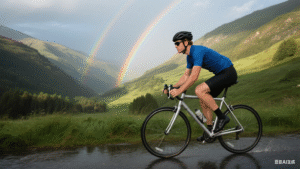As a professional bicycle OEM manufacturer specializing in children’s tricycles, our factory combines advanced engineering expertise with rigorous safety protocols to deliver ASTM-certified products that meet global market demands. With over 15 years of experience serving international brands, we have established a comprehensive production system that prioritizes child safety while maintaining cost-effectiveness for business partners.
The foundation of our manufacturing process lies in strict compliance with ASTM F963-23 safety standards – the most stringent regulatory framework for children’s products in North America. Our engineering team systematically addresses each requirement through three core design principles: mechanical safety, material integrity, and ergonomic functionality. Mechanical safety protocols eliminate pinch points through 3D modeling simulations that identify potential hazards down to 0.1mm precision. Material selection follows a multi-stage verification process, including chemical composition analysis to ensure compliance with ASTM’s heavy metal restrictions and flammability tests using standardized testing apparatus.
Our OEM capabilities extend beyond basic compliance to offer customized design solutions. The product development cycle begins with client-specific briefings covering target age groups (12-36 months or 3-5 years), regional regulatory requirements, and branding specifications. Using CAD software integrated with finite element analysis (FEA), we optimize structural components like welded joints and wheel axles to withstand 200% of standard load requirements. This engineering approach has resulted in a 98.7% first-time approval rate during third-party safety audits.
The production floor implements a six-sigma quality control system featuring automated inspection stations at critical junctures. Laser alignment tools guarantee wheelbase tolerances within ±0.5mm, while torque sensors verify fastener tightness according to ASTM B18.15 specifications. Each tricycle undergoes dynamic stress testing that simulates 5,000 kilometers of use through accelerated life testing machines that apply 10N lateral forces to handlebars and 50kg vertical loads on seats.

Material innovation remains a key competitive advantage. Our R&D department has developed proprietary composite materials combining high-impact polypropylene with UV-resistant additives, achieving ASTM D4329 durability ratings exceeding 1,200 hours of simulated sunlight exposure. The three-layer powder coating process meets ASTM B117 salt spray standards for corrosion resistance, maintaining Class 1 protection after 960-hour testing cycles.
Ergonomic design optimization utilizes anthropometric data from multiple global databases to ensure proper seat height adjustment ranges (40-55cm), handlebar reach distances (35-45cm), and footrest positioning. These dimensions are validated through biomechanical simulations that model children’s movement patterns during typical riding scenarios.
Our quality assurance framework includes dual certification under ISO 9001 and ISO 22000 standards, with production batches traceable through blockchain-based quality logs. Statistical process control (SPC) charts monitor critical dimensions in real-time, maintaining CpK values above 1.67 for key safety parameters. Third-party testing partnerships with SGS and Intertek ensure continuous compliance verification.
The factory’s 20,000 square meter facility houses dedicated production lines for different product categories, including balance bikes, pedal tricycles, and convertible models. Automated welding robots achieve 99.8% joint consistency, while robotic painting systems ensure uniform coating thickness between 60-80 microns. Inventory management utilizes RFID tracking for component traceability down to individual production batches.
For business partners, our OEM services include comprehensive technical support through all development phases. This includes 3D prototyping using SLA printing technology, regulatory documentation preparation (including CPSC compliance statements), and logistics optimization through container loading simulations. The standard production timeline – from design approval to FCL container shipment – typically requires 45-60 days.
Environmental responsibility is integrated through recycled material usage (35% post-consumer content in standard models) and energy-efficient manufacturing processes that reduce CO2 emissions by 40% compared to industry averages. Our facility maintains compliance with REACH regulations and offers non-toxic paint options meeting EN 71-13 safety standards.
This systematic approach to children’s product manufacturing has resulted in a 99.3% customer retention rate among our OEM partners. By combining cutting-edge technology with decades of industry expertise, we continue to set benchmarks for safety and quality in the kids’ mobility sector.
References: ASTM International. (2023). Standard Consumer Safety Specification for Toy Safety. ASTM F963-23
Consumer Product Safety Commission. (2022). Children’s Product Safety Rules
International Organization for Standardization. (2020). ISO 8124-1:2018 Safety of toys
European Committee for Standardization. (2021). EN 71-1:2014+A1:2018 Safety of toys”